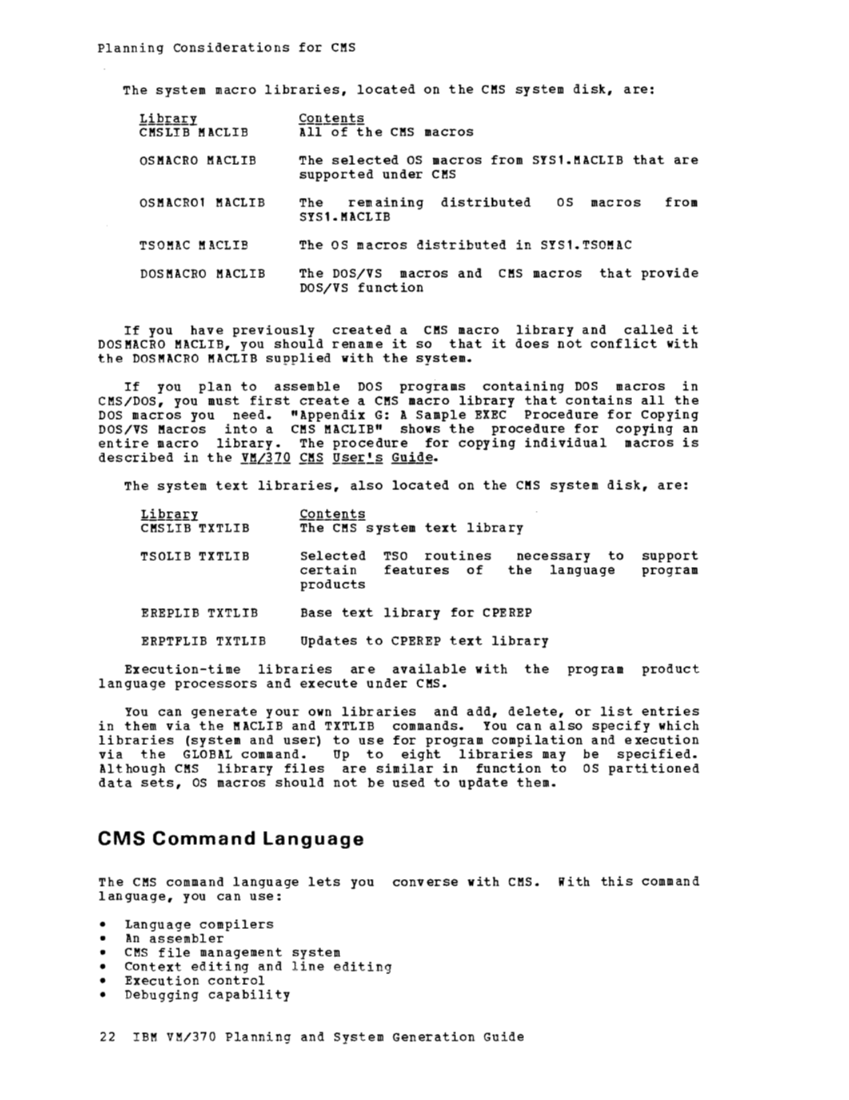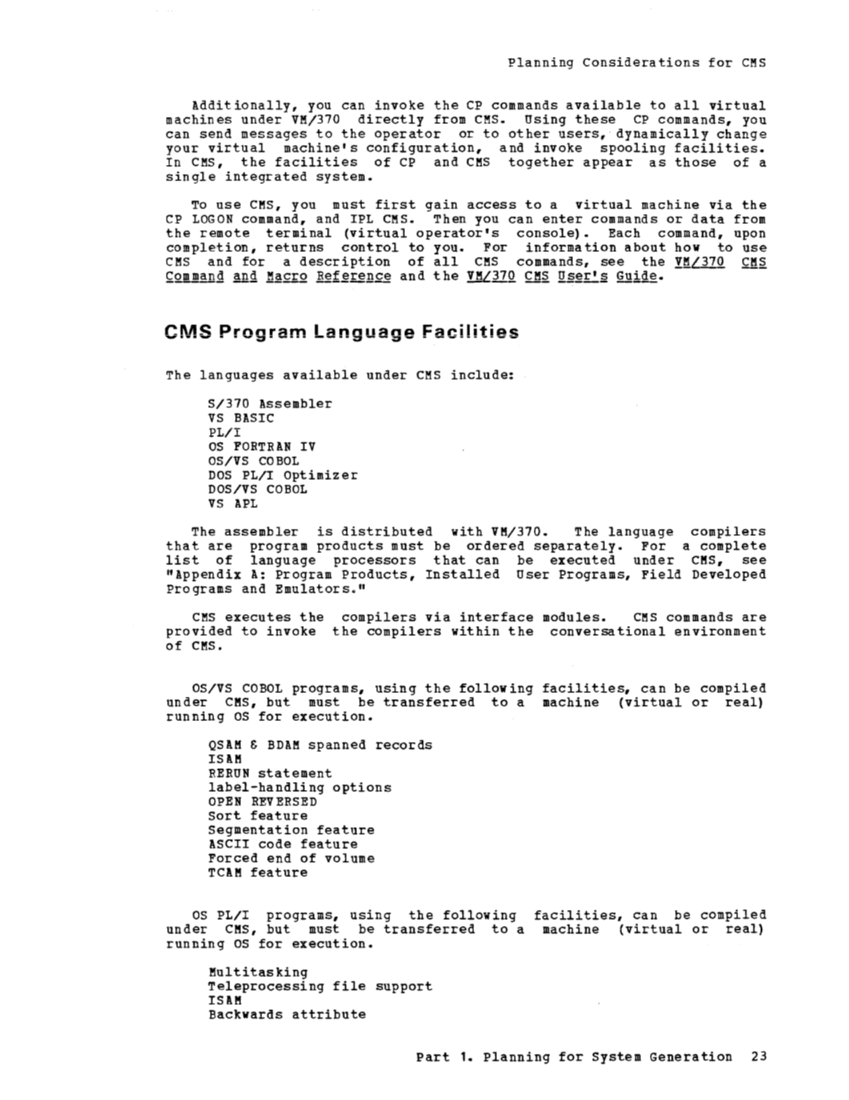Planning Considerations for CMS The system macro libraries, located on the CMS system disk, are: 1ibIllY CMSLTB M ACLIB OSMACRO MACLTB OSMACROl MACLTB TSOMAC M ACLIB DOSMACRO MACLTB CMS macros
The selectedOS macros from SYS1.MACLIB that are
supported underCMS The remaining distributed SYS1. MACLIB OS macros
TheOS macros distributed in SYS1.TSOMAC from
TheDOS/VS macros and CMS macros that provide DOS/VS function
If you have previously created aCMS macro library and called it DOS MACRO MACLIB, you should rename it so that it does not conflict with
theDOS MACRO MACLIB supplied with the system.
If you plan to assembleDOS programs containing DOS macros in CMS/DOS, you must first create a CMS macro library that contains all the DOS macros you need. "Appendix G: A Sample EXEC Procedure for Copying DOS/VS Macros into a CMS MlCLIB" shows the procedure for copying an
entire macro library. The procedure for copying individual macros is
described in theCMS system disk, are: LiQrary CMSLIB TXTLIB TSOLIB TXTLIB EREPLIB TXTLIB ERPTFLIB TXTLIB Content§ The CMS system text library Selected certain
productsTSO routines
features of
necessary to
the language
Base text library forCPEREP Updates to CPEREP text library
support
program
Execution-time libraries are available with the program product
language processors and execute undereMS. You can generate your own libraries and add, delete, or list entries
in them via theMACLIB and TXTLIB commands. You can also specify which
libraries (system and user) to use for program compilation and execution
via theGLOBAL command. Up to eight libraries may be specified.
AlthoughCMS library files are similar in function to OS partitioned
data sets,OS macros should not be used to update them. eMS Command language
TheCMS command language lets you converse with CMS. With this command
language, you can use:• Language compilers • An assembler • CMS file management system • Context editing and line editing • Execution control • Debugging capability
22 IBMVM/370 Planning and System Generation Guide
The selected
supported under
The
The
If you have previously created a
the
If you plan to assemble
entire macro library. The procedure for copying individual macros is
described in the
products
features of
necessary to
the language
Base text library for
support
program
Execution-time libraries are available with the program product
language processors and execute under
in them via the
libraries (system and user) to use for program compilation and execution
via the
Although
data sets,
The
language, you can use:
22 IBM











































































































































































































































































































































































































































































































































